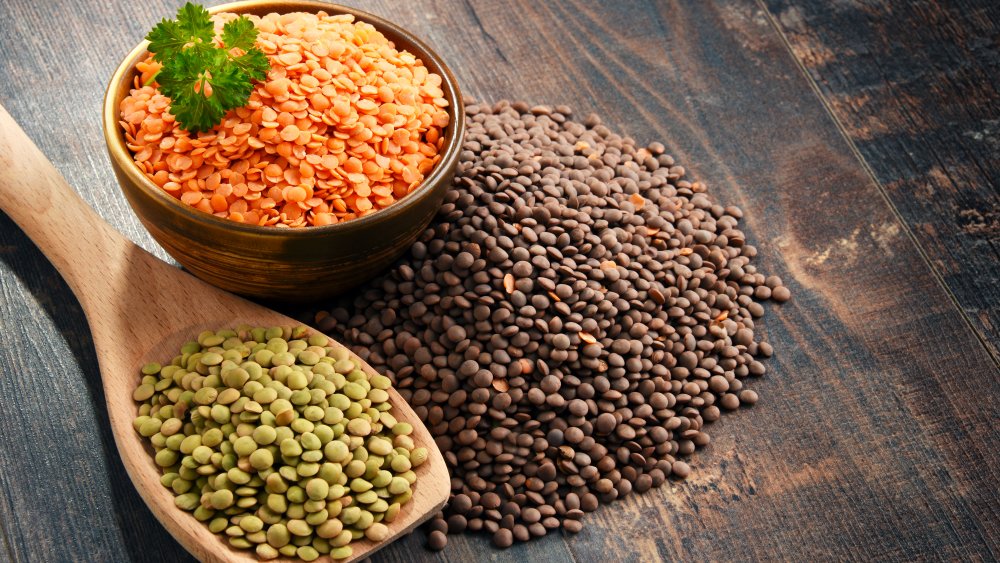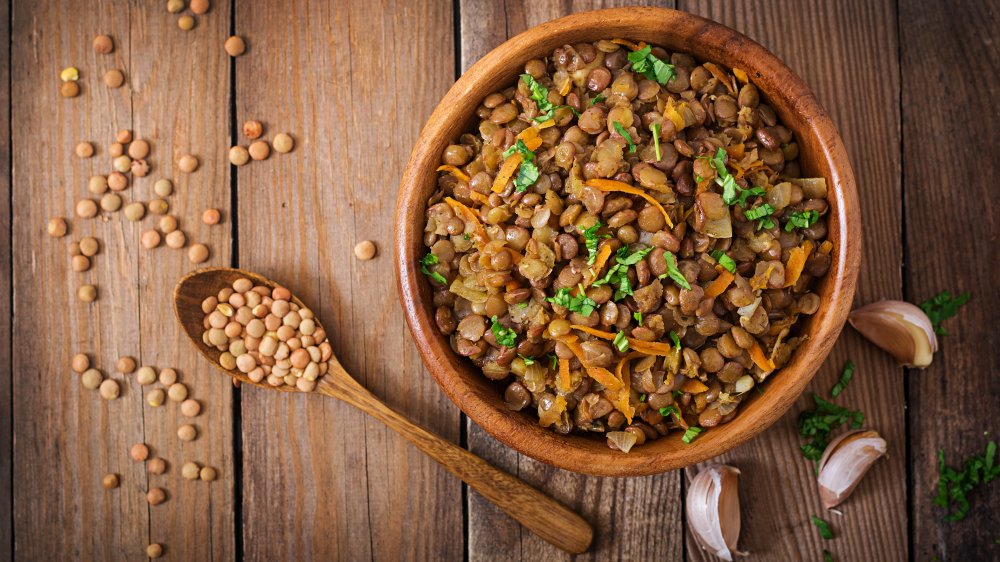You've Been Making Lentils Wrong This Whole Time
If you're unfamiliar with lentils, these small round foods are actually legumes, and part of the same family as beans and chickpeas, according to Cooking Light. The name lentil comes from the Latin word for "lens," and these flat little guys have been used in cooking for centuries.
Lentils can be found in a variety of cuisines, including Indian, Egyptian, and French. They come in four varieties distinguished by their color, which are better suited for different dishes. Green (or French) lentils are best for adding to salads, or eaten as a side dish, while red and yellow lentils are great pureed into soups or sauces. Black (or Beluga) lentils go well with meat and mushrooms, and brown lentils hold their texture best after being cooked, and are great for veggie burgers.
Lentils are a very healthy addition to any meal, and contain a significant amount of fiber and protein, which help keep you fuller for longer. Perhaps you already use lentils often in cooking. But have you been making them wrong all along?
Mistakes you might be making when cooking lentils
The Kitchn claims lentils are incredibly easy to cook, but there are a few mistakes people make which can lead to a pot full of disappointment. One fairly common mistake is buying old lentils, which take longer to cook. It's recommend you purchase lentils from the bulk bin if your grocery store has one, as these generally have a higher turnover rate than the bags sitting on the shelves. Be sure to use the lentils within a few months of purchase.
Another mistake people make is forgetting to sift and rinse their lentils to get rid of any dirt, or small pebbles that might have snuck in with the legumes.
A third mistake is not adding aromatics to the pot while cooking. Lentils are essentially beans, so they will taste pretty boring if you don't add anything to punch up the flavor. The Kitchn suggests adding garlic, rosemary, and onion, and cooking with stock instead of water to enhance the flavor.
People also frequently make the mistake of rushing their lentils by cooking on too high heat. A rapid simmer or boil will cause lentil skins to split, turning them into mush. Cooking lentils low and slow allows them time to cook properly, and retain their shape. The final mistake is adding salt or acid too soon, which can prevent the lentils from reaching their ideal tenderness. Wait till your lentils are cooked to your liking, and then add salt, and acid (like lemon juice or vinegar) to taste.

